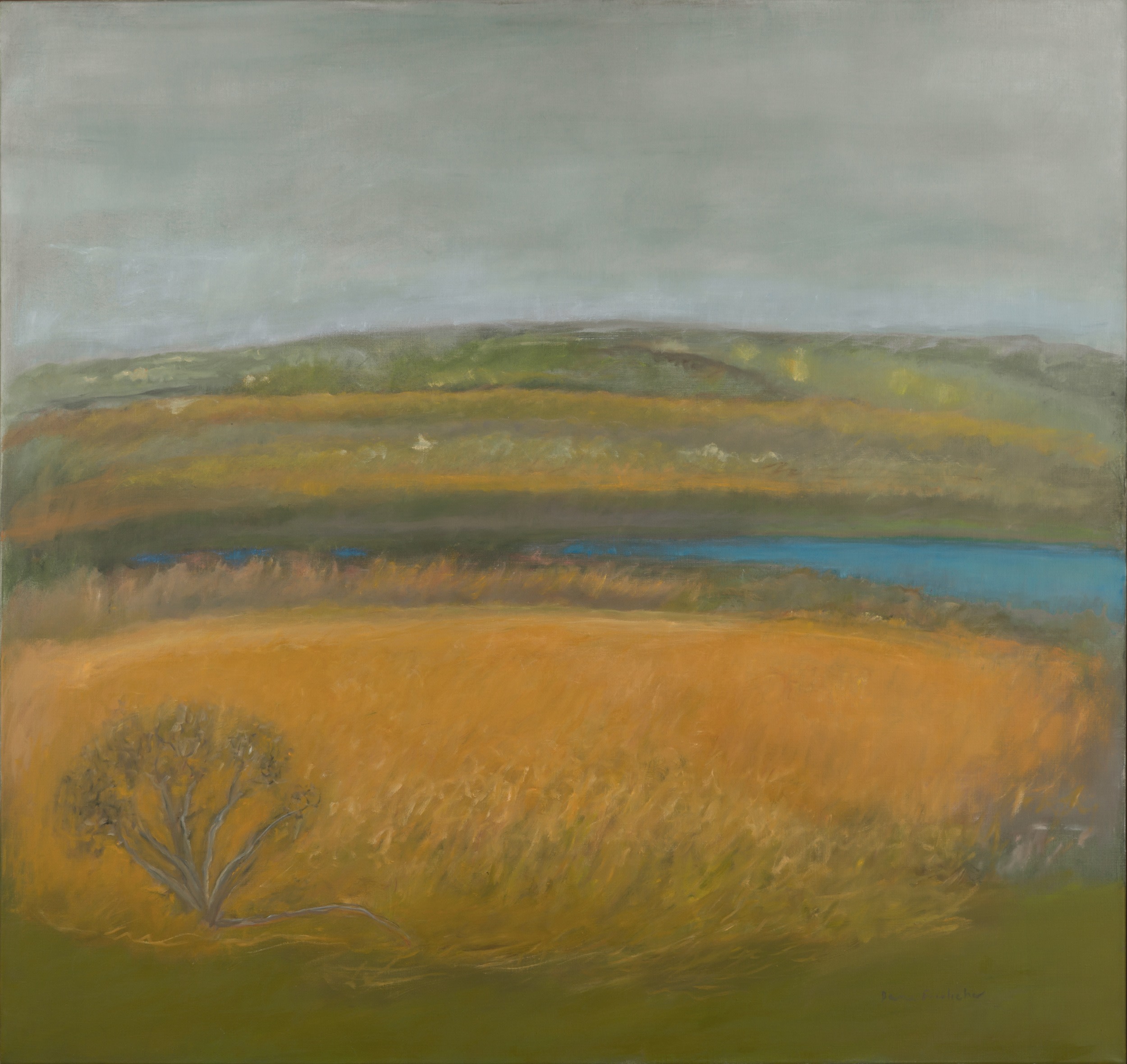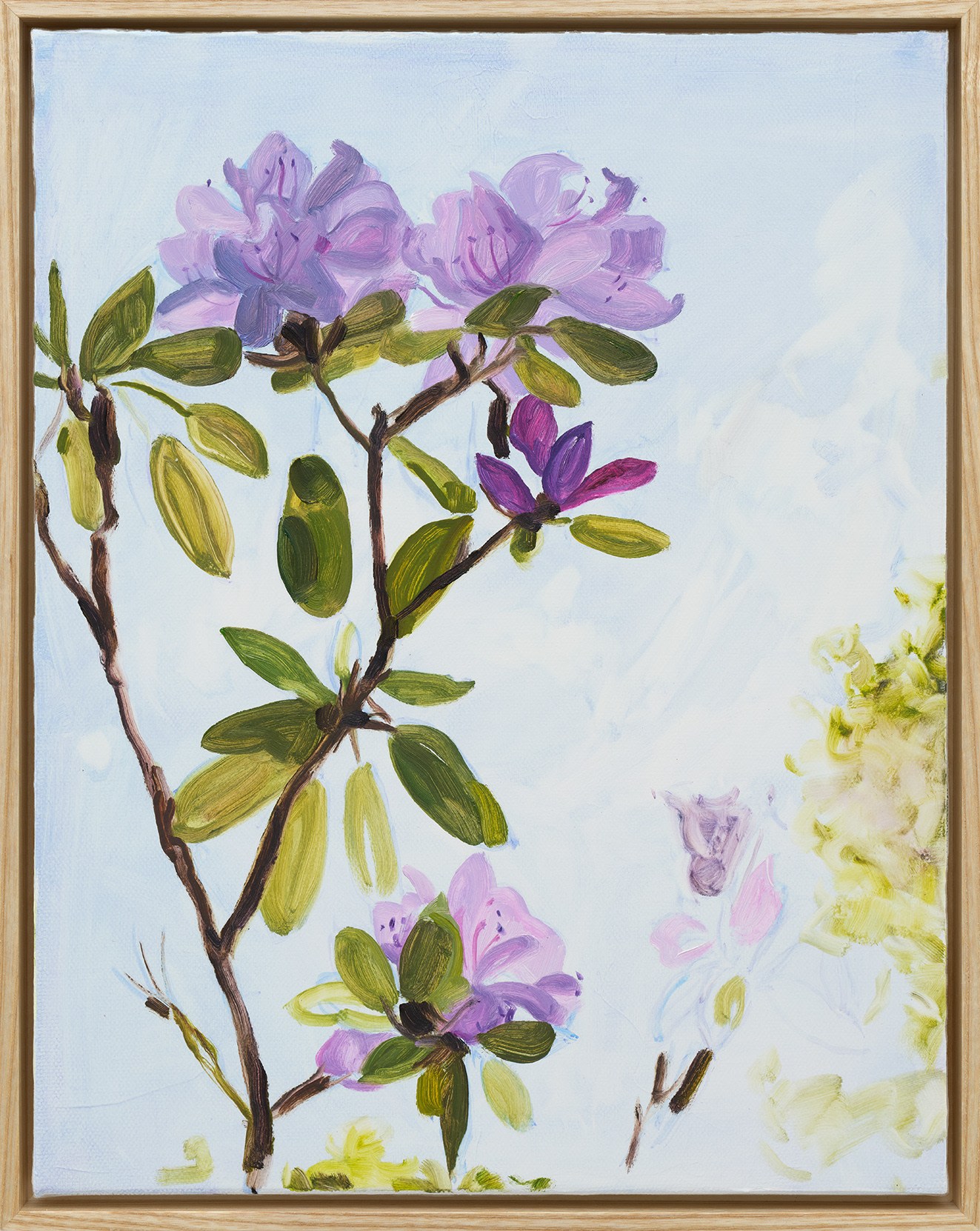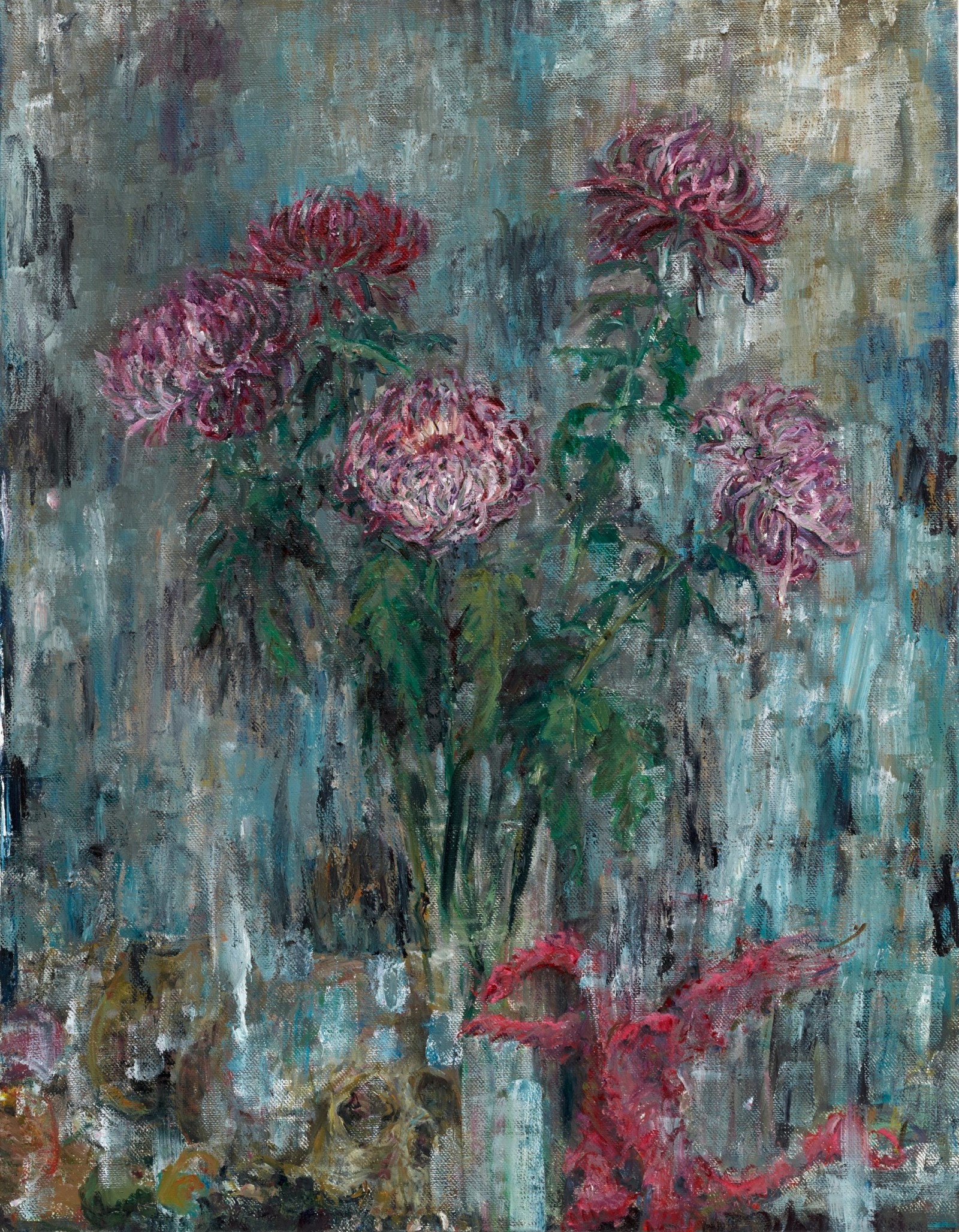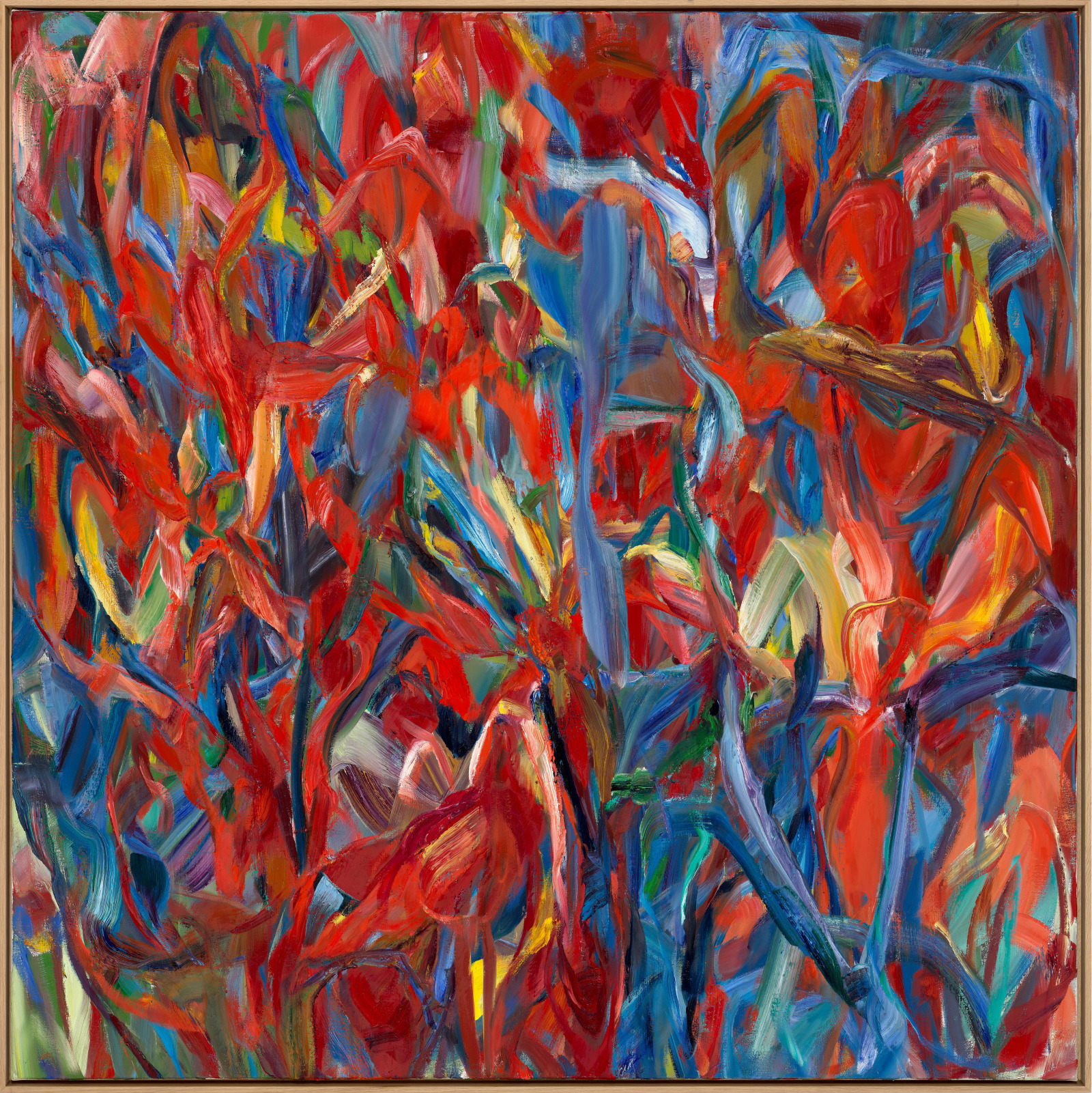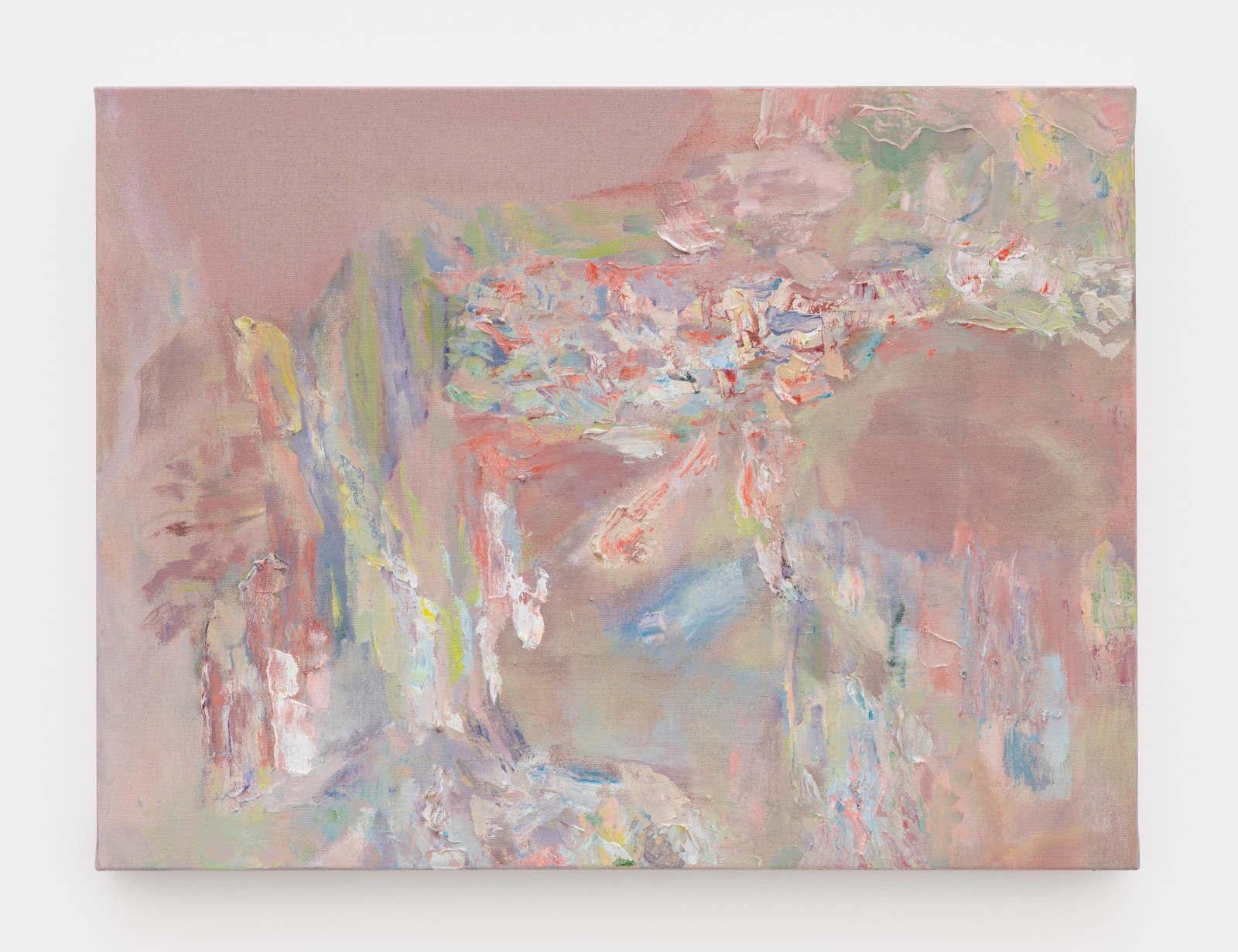“Jane Freilicher’s paintings appear to be rooted in representation, notably in still life and landscape, but she aligns her concerns with ‘an inner impulse that wants to be expressed or a sensation of colour or atmosphere or arrangement of shapes’. Freilicher frequently employs the device of a still life adjacent to a window framing the view beyond as in Blue Table (1966), in which the left side of the canvas is filled by pink blossoms and spiky green shoots, emerging from a large rustic pitcher on a sharply angled blue table that pushes up against the narrow landscape to the right represented by brushy bands of horizontal colour.
Grace Hartigan's Tide Pool (1972) blends watercolour and collage, taking the shapes of gastropods, algae and other marine life intermingling between shards of blue. ‘I perceive the world in fragments,’ Hartigan noted, ‘Somehow, in painting I try to make some logic out of the world that has been given to me in chaos.’”
– Lydia Yee, Curator
Jordan Casteel’s recent flower paintings are based on the seasonal blooms in her garden in the Catskill region in New York, where she has recently relocated from New York City. Turning from the street scenes and subway riders of New York that provided her subject matter for years, her new bucolic environment provided a new perspective. ‘I’m now starting to paint landscapes and still lifes, leaning into the questions of light and space and form within the context of a still life or my immediate surroundings as they are changing.’ A highly personal subject, Casteel’s flowers can be viewed as self-portraits.
In Rosebay (2024), translucent purple flowers stand out against a backdrop of soft, sky blues, while in Phoenix (2024) rich green leaves stand out vividly against a pale crimson interior, contrasted with a flower surging out in florid oranges, pushing against the top of the composition.
‘I see my own labour in it. It’s not about observing the things that are most true for you in this moment. It’s about observing the things that were most true for me.’
– Jordan Casteel
Sabine Moritz’s Deception Island I (2015) depicts a wintery seascape with the mountainous backdrop of a volcanic island in Antarctica. Describing this tension between abstraction and landscape, Moritz has stated: ‘It’s like there are two banks, figuration on one side and abstraction on the other, and a river between. The river is obstinate. It takes time to cross.’
The recent turn toward landscape, still life and botanical subjects by a younger generation of artists signals a renewed interest in finding one’s place within the world, and by extension, painting. Francesca Mollett’s recent canvases distill observations, recorded in drawings and notes, of natural phenomena often encountered in urban environments, as in her painting, Nacre (2024).
Vivien Zhang mixes painterly and graphic languages in a group of small paintings depicting the individual blooms and seeds of a tree native to southern China. The plant, sterculia lanceolata, has the prefix ‘pseudo-’ in its common name in Chinese, marking it out as inauthentic. This confusion around authenticity is, for Zhang, liberating.

